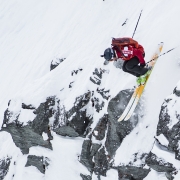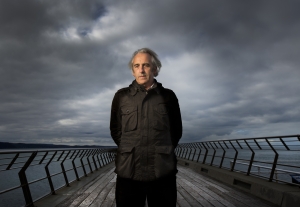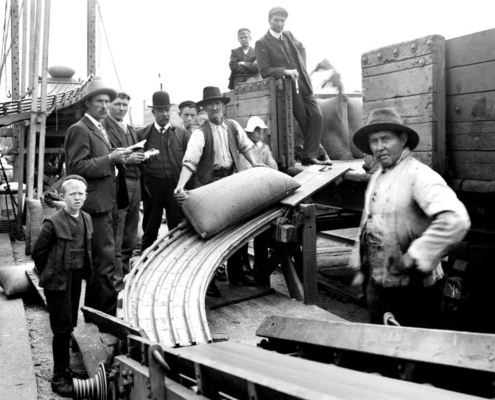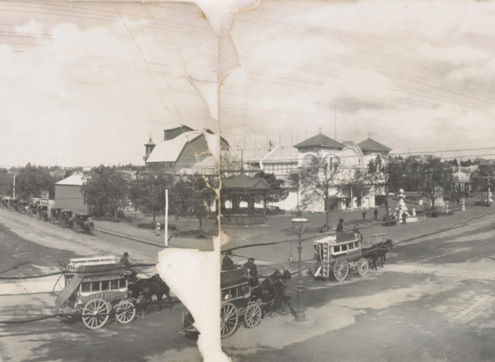Torquay’s Freeride world champion skier Lorraine Huber has announced her retirement from the Freeride World Tour
after eight seasons. The Freeride World Tour is an annually toured series of events in which the best freeride skiers and snowboarders
compete for individual event wins, as well as the overall title of World
Champion in their respective genders and disciplines.
“I’ve had eight intense and unforgettable years on the FWT and I am
very happy to end my competition career on such a high note,” Huber said.
During the past 2018 season, Huber dominated the fourth tour stop in
Fieberbrunn in Austria with a win, followed by a second place at the
Xtreme Verbier in Switzerland, the finals of the Freeride World Tour,
putting her in third place overall.
In 2017, Huber achieved her big dream of winning the World Champion title. She also became runner-up
champion in 2014. She was awarded Vorarlberg Sportswoman of the Year
2017 and received the Golden Medal of Achievement in Sport from her home
state of Vorarlberg, Austria.
“Lorraine Huber is one of the best female skiers we’ve seen on the
Tour, winning a World Title and demonstrating one of the strongest
characters and commitment to her sport,” said Nicolas Hale-Woods, CEO of the
Freeride World Tour.
“Lorraine has been a major actor in the sport’s progression, she has shared her passion, and
is now willing to pass on her experience to future generations, which is
fantastic. Thank you Lorraine!”
Although Huber is retiring from freeride competition, by no means does
this suggest retirement from professional skiing.
“I want to put all my energy into new projects now,” she said.
“It’s especially important to me to pass on my knowledge and experience in the sport of freeriding to future generations –
particularly to female skiers.
“To this end, I plan on expanding my women’s freeride camps in Lech am Arlberg. I will also be busy with
the production of ski film projects. My next big goal is to complete my master’s degree in mental strength coaching at the University of
Salzburg. This will enable me to coach athletes professionally in
reaching their full potential.”
FEATURE:
DAREDEVILS are a funny breed. Some are clearly adrenalin junkies bent on scaring the daylights out of themselves for the rush it brings. Others are more methodical, analytical, driven for the thrill but exercising more care.
Talk to, say, base jumpers and you’ll note a supreme kind of confidence but also a deadly serious attention to detail. One slip and the game’s over. No second chances there. Same goes for highwire artists, F1 drivers, stuntmen and pilots, divers, speleologists, rock climbers, commandoes … blink and you might find yourself dead.
Torquay ski superstar Lorraine Huber talks about an ‘avalanche moment’ that very nearly persuaded her to walk away from extreme skiing — better known these days as freeriding — where she last month ranked number one in the world.
That’s number one in the world at throwing yourself over a precipitous cliff — a breathtaking sport many consider the scariest in the world. Forget bungee jumping and parachuting, this is a white-knuckler without a net and every chance of exiting this world at any point on the course between go and whoa.
When that sport, your career, is all about jumping off a mountain, it pays to know everything you can possibly know about what’s underneath you; the type of snow, where rocks are, the angle of the slope, what line you need to take. Judges agree and detract rather than add points for reckless manoeuvres.
But avalanches, for all the planning, awareness and calculated risk, are just plain terrifying. It’s not you throwing yourself at the mountain, it’s the mountain throwing itself at you. Lorraine is well aware of the threat and at times it’s nearly prompted her to walk away from the sport she helped pioneer in the Austrian alps and where she has dominated international competitions for more than a decade.
Raised on the snowfields of Austria, in Lech am Arlberg, the nearest ski lift was 100 metres from her front door, Lorraine Huber went to ski school instead of kindergarten. Then at age eight, she moved to Australia, and Torquay. She studied at Newtown’s Sacred Heart College and grew up by the sea, but managed to get in six or so weeks skiing back in Austria.
She’s been living in the mountain village she grew up in, Lech am Arlberg, since the end of 1998 after graduating from Sacred Heart. It’s her dad’s home town and her family goes back there 400 and more years. The house her ancestors used to live is now the heritage museum.
Proud as she is of that, her mother is from Torquay, where Lorraine lived from age eight to 18, and it still feels more like home to her than anywhere else, she says. She’s maintained friendships with girlfriends from primary and secondary school alike.
But in Lech, back in 1998, her world was about to change again. As she phrases it:
“My skiing world was all about making perfect, rhythmical turns straight down the fall line in all types of snow conditions, scooping tracks and creating symmetrical patterns in the snow in the true, traditional Arlberg style. Then, in February 1998, something remarkable happened …”
Avalanche warnings had locked entry in and out of Lech and Lorraine found herself, with her ski instructor buddies, skiing fast, long turns and dropped cliffs for the first time.
“Of course I bailed every time, but in the heavy snow fall, it didn’t matter,” she says. “On the fourth day, the sun came out, and I was tearing it up with my mates, headed straight for the cliff we sessioned, launched it, stomped it, and then arced four long and fast turns down to the bottom of the slope.”
And that was it. She was hooked on freeskiing.
A few years later, urged on by her instructor mates, she entered her first big mountain freeride contest — the Red Bull Snowthrill in Slovenia — and took out first prize. She’s been a professional ever since. And last season, 2014, saw her pipped for the Freeride World Tour’s top spot, running second to fellow Arlberg skier Nadine Wallner — a prodigious achievement in anyone’s book.
She’s also a coach for prestigious KJUS World events and Kastle Adventure Tours, a fully-certified ski guide and a director of freeride camps. Her sponsors include KJUS and Kästle, together with Scott, Garmont and ABS Avalanche Airbag. Just to drop a few names.
In fact, tap Lorraine Huber into Google and you’ll find a tidy 130,000-plus pages detailing her career as a professional freeride skier. Videos, articles, photographs … there are mountains of maneouvres and airborne escapades she throws herself through that will raise the hair on the back of your neck.
But as you might expect with a dangerous sport, it hasn’t been smooth sailing all the way. In 2007, she received a nasty reminder when she ruptured her ACL and MCL in a bad crash.
She underwent a ligament graft transplant — using a part of her hamstring to replace the ruptured ACL, which turns into a ligament-like tissue. The MCL was able to be sewn back together.
“I did eight months of rehab in Australia before getting back on snow,” she recalls. “My rehab didn’t go so well because I always had pain behind my kneecap, which consequently prevented my wasted muscles in my right leg from redeveloping. Due to this, I developed tendinitis in my right patella which, unfortunately, has become chronic.”
Did she find a strength she didn’t know she had?
“Yes, absolutely. I don’t think it is anything unusual though and I believe most people would have done the same. If life deals you some hardships then you just get through it because you have to, one day at a time. What other alternative do you have, anyway? The natural thing for me was to focus on my rehab and getting better.”
More recently, Lorraine struck further injury problem but tenacity and resilience saw her through.
“The season before, I came closer than ever before to achieving my goal of becoming Freeride World Tour champion. After a crash at the finals in Verbier (Switzerland), I placed second overall behind Arlberg local Nadine Wallner, who showed nerves of steel with a solid run that placed her in second on the day, and first overall.
“I had tasted blood, however, and was super-motivated to keep training and improving. During my off-snow training, my main motivator was the overall title. My thoughts returned to that title often.
“Come December, I was at the top of my game, feeling physically and mentally stronger than ever and also excited about skiing on the new Kästle BMX skis I had helped to develop. Then, on 26 December, disaster struck.
“All day we had been skiing low angle, grassy slopes and were having a ball. Suddenly, while skiing in the Seekopf area in Zürs, I hit a rock hidden under 30cm of snow and came to a complete stop. I broke my ankle on impact.
“I can tell you, it bloody hurt. When I heard my doctor give me his diagnosis of five to six weeks rest, my world started crumbling around me.”
Lorraine went through a learning curve, realising she’d focussed too much on the overall title the previous season, instead of directing her focus from one event to the next, aiming to just ski her best at each competition.
But within five weeks, almost miraculously, she was back skiing the Freerider World Tour, free in her mind, and finishing seventh overall and qualifying for the FWT 2016 and finishing fourth.
This year, Lorraine’s drive, determination and steely resolve saw her at last grasp the Freerider World Tour number one mantle.
“What drives me to be a freerider?” she says.
“I want to live a passionate life. I want to live a life that’s full of passion and a strong life and freeriding allows me to do that.”




























